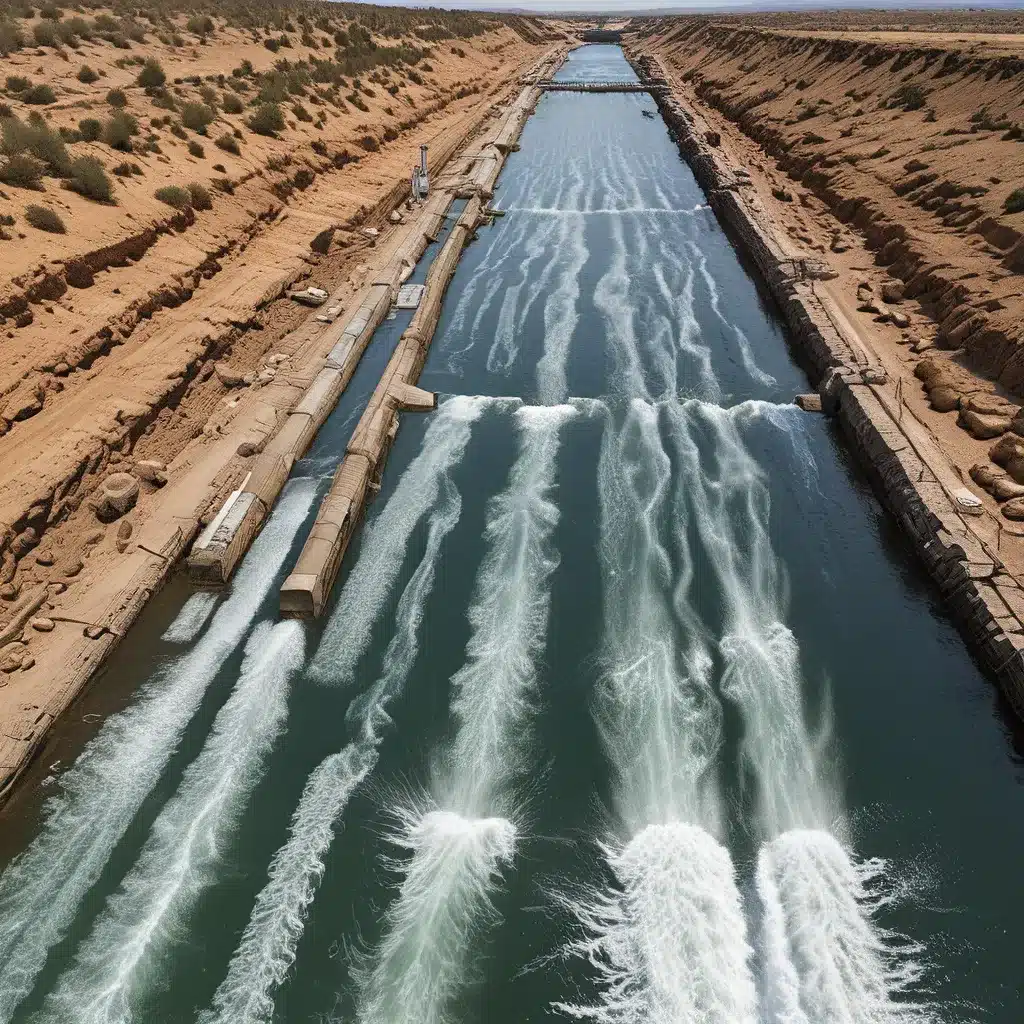
Diving into the Depths of the Water-Energy Conundrum
As I sit here, sipping my morning coffee and gazing out at the glistening waters of the nearby lake, I can’t help but ponder the intricate web of dependencies that govern our most precious resources – water and energy. It’s a nexus that has been puzzling experts and policymakers alike, a delicate balance that we must navigate with utmost care if we are to achieve true sustainability.
The truth is, our modern way of life is inextricably linked to the availability and management of these two essential elements. Water is the lifeblood that sustains our communities, fuels our industries, and nourishes our agricultural endeavors. Energy, on the other hand, powers our homes, businesses, and transportation networks, enabling the very fabric of our civilization. But what happens when the scales tip too far in one direction?
Recent research has shed light on the delicate balance that must be struck between water and energy, highlighting the urgent need for integrated resource management solutions. As the global population continues to grow, the demand for both water and energy has skyrocketed, leading to a heightened risk of scarcity and competition for these precious resources.
Unraveling the Complexities of the Water-Energy Nexus
To truly understand the water-energy nexus, we must first acknowledge the intricate web of interconnections that bind these two sectors together. Water is essential for energy production, whether it’s for cooling power plants, extracting fossil fuels, or generating hydroelectric power. Conversely, the treatment and distribution of water requires significant amounts of energy, creating a symbiotic relationship that must be carefully managed.
Adding to the complexity, the effects of climate change have introduced new challenges, disrupting the delicate equilibrium that once existed. Droughts, floods, and other extreme weather events can wreak havoc on both water and energy systems, leading to cascading impacts that ripple through our communities and economies.
As one expert eloquently stated, “The water-energy-food nexus is a complex and interlinked challenge that requires a holistic approach.” This sentiment has never been more true, as we grapple with the pressing need to ensure food security, protect our natural resources, and transition to a more sustainable future.
Embracing Integrated Resource Management Solutions
The path to navigating the water-energy nexus lies in the adoption of integrated resource management strategies. These innovative approaches recognize the interconnectedness of water, energy, and even food production, and seek to optimize the use and conservation of these resources in a harmonious manner.
One such solution is the implementation of circular economy principles, which aim to redefine the traditional linear “take-make-waste” model of resource consumption. By embracing a more regenerative approach, we can minimize waste, maximize efficiency, and unlock new opportunities for sustainable development.
Another promising avenue is the integration of renewable energy sources, such as solar, wind, and hydropower, into our water management systems. By reducing our reliance on fossil fuels, we can not only lower our carbon footprint but also enhance the resilience of our water infrastructure in the face of climate change.
Harnessing the Power of Multi-Stakeholder Collaboration
Navigating the water-energy nexus is no easy feat, and it requires the collective effort of a diverse range of stakeholders. From regional governments and policymakers to local businesses and community organizations, everyone has a role to play in shaping a more sustainable future.
Companies like Inland Waters Inc., for instance, are leading the charge in providing innovative water treatment and environmental services that seamlessly integrate energy-efficient technologies and renewable energy solutions. By working closely with communities and leveraging the latest advancements in science and engineering, they are paving the way for a more resilient and resource-conscious water management paradigm.
Collaboration and knowledge-sharing are key to unlocking the full potential of integrated resource management. As we’ve seen at recent events like the SDGs Annual Conference 2023 in Yogyakarta, Indonesia, bringing together experts from various fields can catalyze the exchange of ideas and foster the development of holistic solutions.
Embracing the Unexpected: Navigating the Water-Energy Nexus with Resilience
As we delve deeper into the complexities of the water-energy nexus, it’s crucial to remember that the path ahead is not without its surprises and challenges. The very nature of this interconnected system means that disruptive events, whether natural or man-made, can have far-reaching consequences that we may not always anticipate.
But rather than view these uncertainties as obstacles, we must embrace them as opportunities for growth and innovation. By cultivating a mindset of resilience and adaptability, we can position ourselves to navigate the uncharted waters of the water-energy nexus with confidence and agility.
After all, the future is not set in stone. It is ours to shape, one integrated resource management solution at a time. And as we embark on this journey, let us be guided by the unwavering belief that by working together, we can create a more sustainable, resilient, and prosperous world for generations to come.


